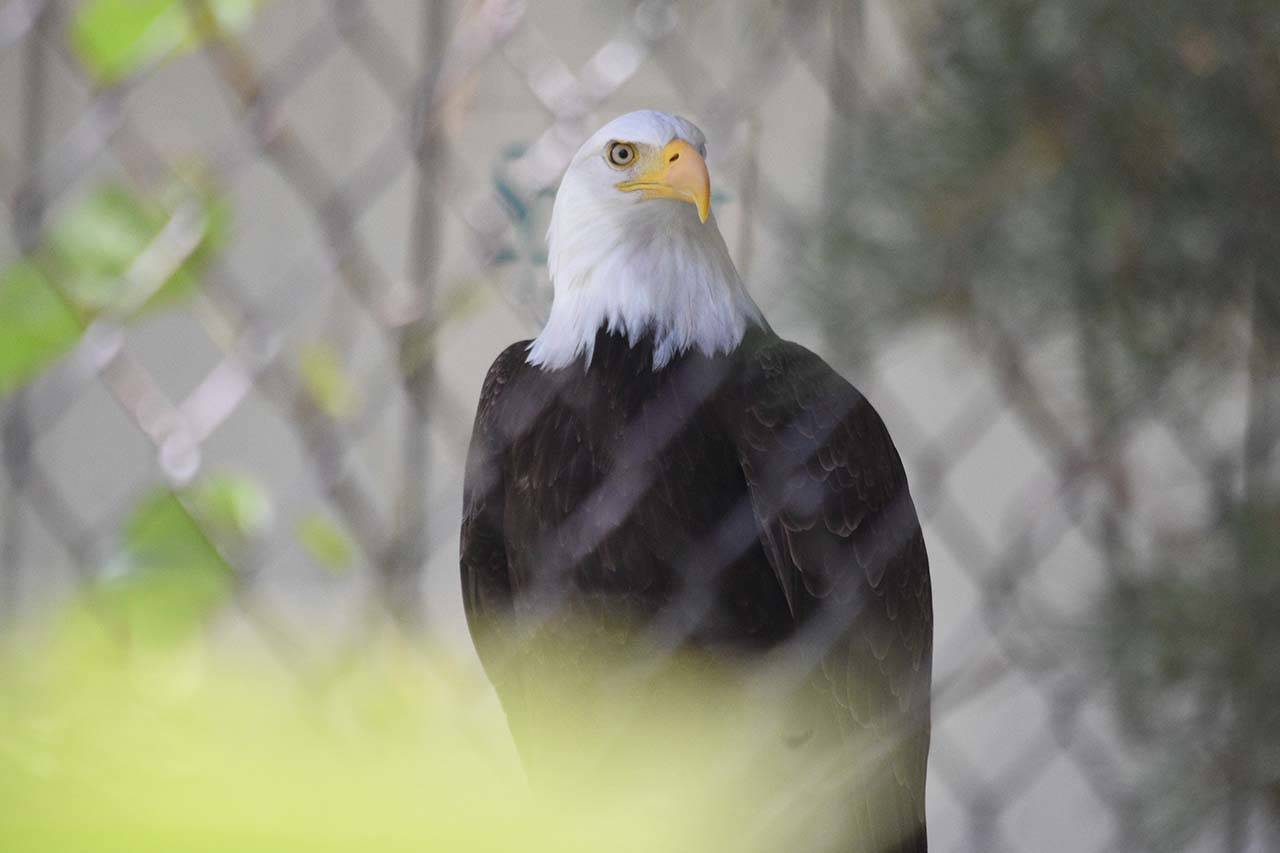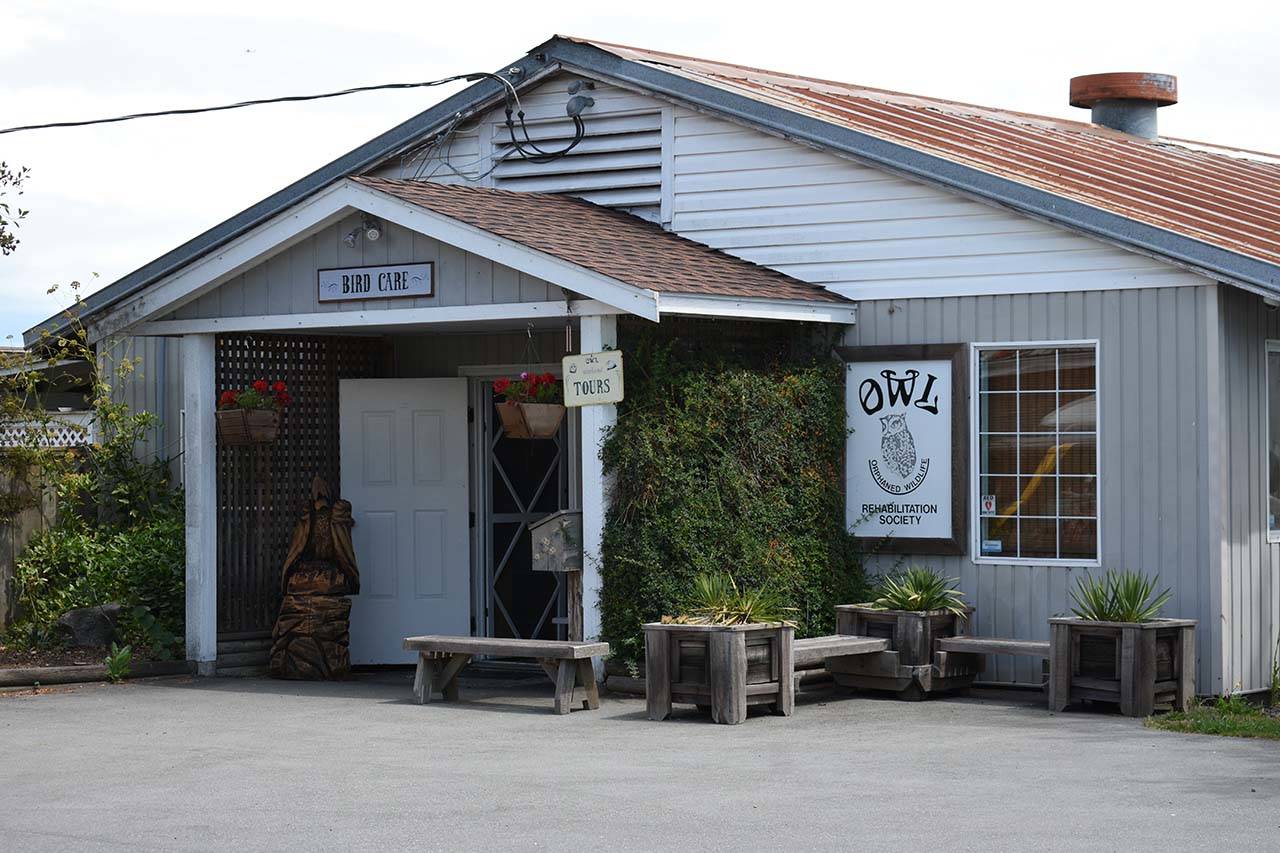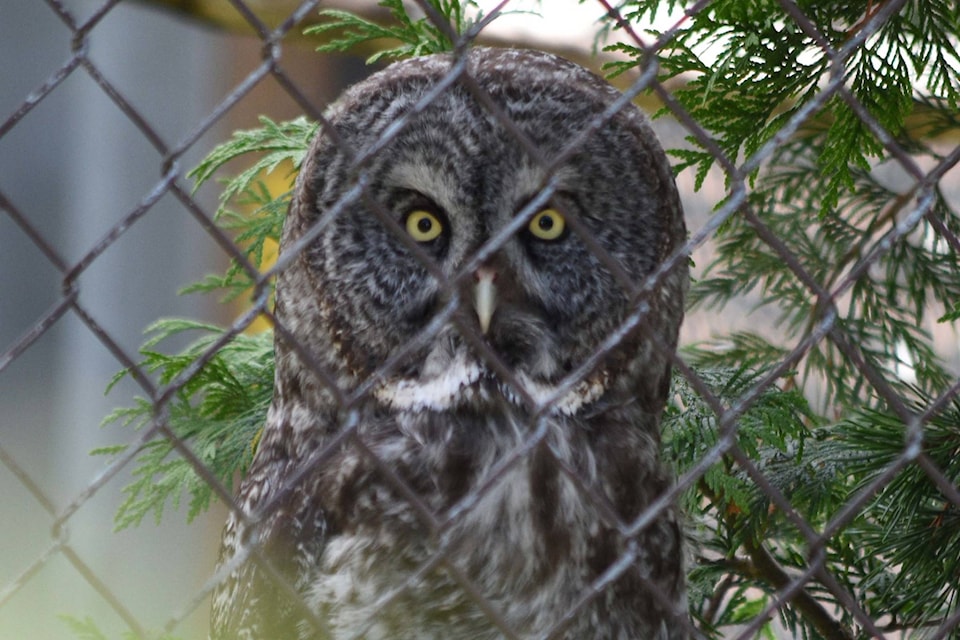An eagle sitting in a tree on Ladner Trunk Road often marks one’s first introduction to the Orphaned Wildlife Rehabilitation Society (OWL).
Sometimes, it’s a hawk flying high overhead. Other times it’s a convocation of eagles in a farmer’s field. These birds may have nothing to do with the facility that hosts more than 700 raptors a year sitting only two kilometres away. But then again, they might.
Each year, OWL captures, rehabilitates and releases more than 700 injured eagles, hawks, falcons, osprey, vultures and owls from places as far away as Yukon, Alberta and the United States, thanks to a small team of dedicated men and women.
| Sonsie, the 15-year-old bald eagle, has bonded to Rob Hope, and treats Hope's glove as his mate. (Grace Kennedy photo) |
“It’s rewarding because you’re not only helping animals, but you’re helping people,” he said. “We have such an ability to enjoy [helping the birds] because this is what we do every day, … but to be able to share that with people too is rewarding.”
Throughout the year, members of the public have the opportunity to tour the public areas of the centre. During the International Ornithological Congress from Aug. 19 to 26, delegates got the chance to as well, giving people from around the world the chance to meet some of OWL’s permanent residents, and possibly get a peek inside the society’s rehabilitation efforts.
RELATED: Delta raptor rehabilitation society opens for its annual open house
“We’re going to pull them in and do some of the behind-the-scenes stuff,” Hope said, but with so many birds being boarded he may need to keep them apart. The safety and comfort of the wild birds always comes first for Hope, which means that any injured raptors or abandoned nestlings will be off-limits to the tour group.
“No matter if you’re the Queen of England, you’re not going to see them,” he said.
But, in early July when the North Delta Reporter visited the centre, he gave this reporter a quick peek at some of the fluffy birds growing up at OWL.
At that time, OWL was in the throes of baby season, with eight great horned owlets, three barred owl chicks, five baby barn owls, 12 merlin chicks (a type of falcon), five eaglets and one baby Cooper’s hawk. Many were either abandoned by their parents or had fallen from their nest and were unable to be returned to their homes.
| The permanent resident cages OWL is hoping to upgrade and make more spacious. (Grace Kennedy photo) |
“Without them, we’d be screwed,” Hope said about the foster birds. “The babies would be seeing us all the time when we’re feeding them and stuff. By having the foster parent, that just removes the human factor out of it.”
One foster dad, a barn owl named Cessna, had taken over the care of two chicks barely a week before. He and the two chicks were in a cage in OWL’s rehabilitation room when the Reporter visited. As Hope pulled back the curtain from the front of the cage, Cessna began hissing, shielding the chicks with his wings. Two little white balls of fluff moved behind him, indeterminate except for one leg that shot into view.
Each owlet had been eating its weight in food daily since coming to OWL, which at a week old translated to a mouse and half a quail breast each. Between the two of them, their meals cost the society $4 a day — not bad when you compare it to the cost of raising a human child to adulthood, but hefty in the face 34 baby birds and counting for the season.
| Sarah the Barn Owl in her usual spot in the bird care building's office. (Grace Kennedy photo) |
“We basically only run seven staff, so the majority of the money is used, of course, for the animals themselves,” Hope said. The society usually has between four and eight volunteers at the centre, but also volunteers around the province that pick up birds in distress and transport them to Delta.
These same volunteers also help release birds that have been rehabilitated back into wild areas near where they were found, which is what will happen to OWL’s baby raptors by mid-August. At that time, the birds will have fledged and gotten to try out their wings in the society’s flight cages before being released.
Then, it’s a waiting game until winter; OWL’s next busy season. The summer’s triumph can turn to tragedy as the weather turns cold and food becomes more scarce.
“All these birds that did so well are all of a sudden crashing, getting weak, getting sick, getting hit by cars, doing what they can to survive and getting hurt,” he said. “Which is usually when we get them in the centre here.”
The city’s location as part of one of the largest Pacific migration routes also brings a lot of birds through Delta on their way south, and often includes many sick or injured birds as well.
RELATED: Snowy owls spotted in North Delta
Helping them survive isn’t always easy to do, Hope said, but it is rewarding for the people who do it.
“There’s no real schooling for it,” Hope said about caring for raptors. “The animals teach us so much on a daily basis that you could never learn in a textbook.”
“It’s not all glory,” he continued. “It’s a passion. It’s not about money; it’s not about fame. You’ve got to enjoy it, and that’s pretty well all it is.”
grace.kennedy@northdeltareporter.com
Like us on Facebook and follow us on Twitter


